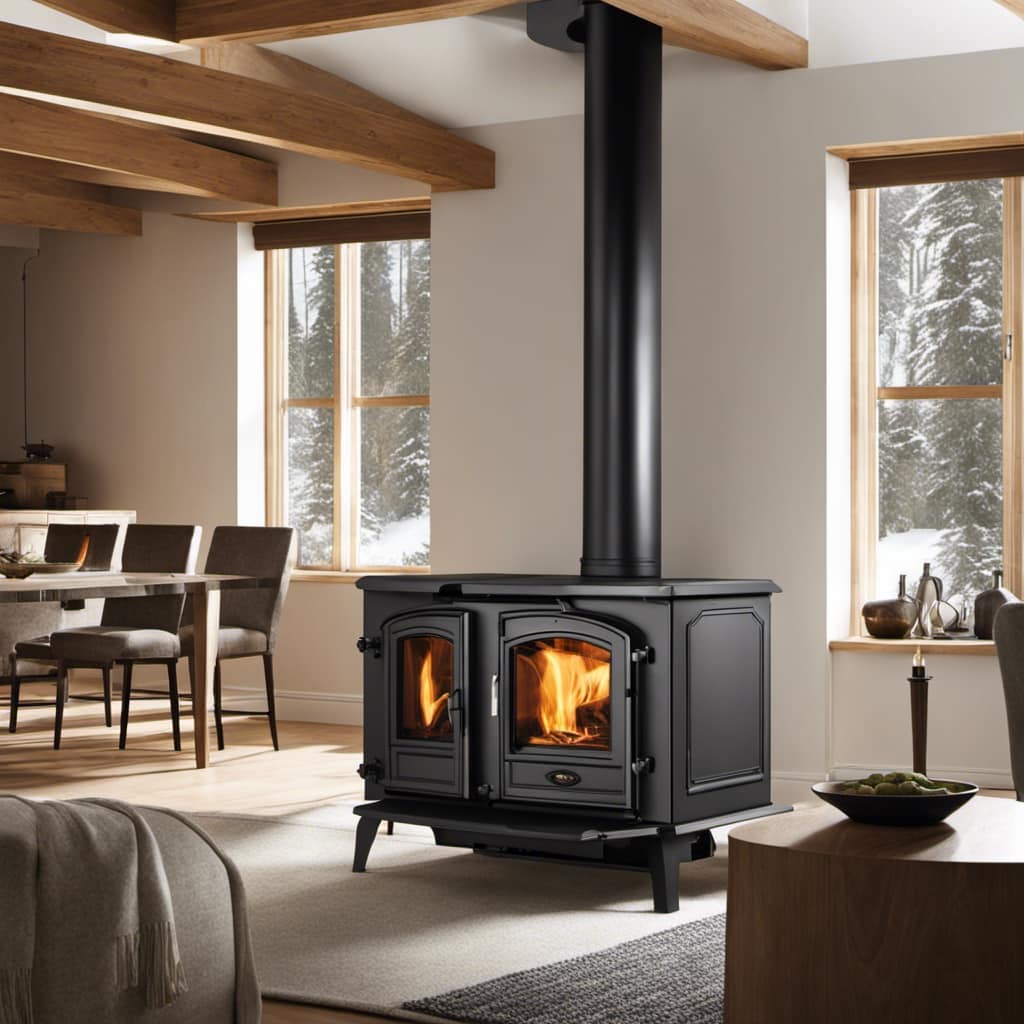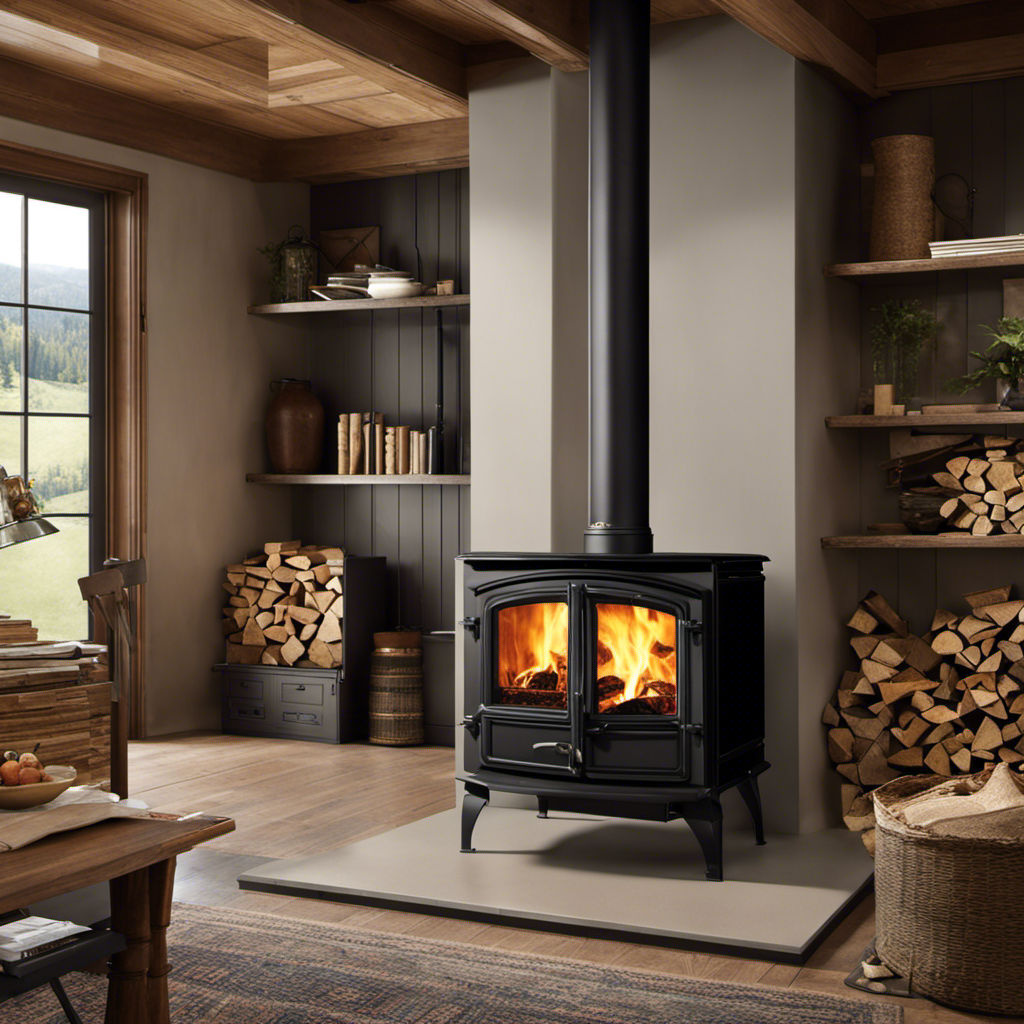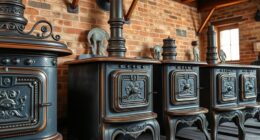As someone who is knowledgeable about wood stoves, I have discovered the secret to keeping a strong fire burning all night long. Achieving this skill requires a specific mix of choosing the right wood, placing it properly, and adjusting the airflow for optimal performance.
By utilizing heat retention techniques and following safety precautions, you can experience the cozy warmth of a wood stove throughout the night.
In this article, I’ll share my expertise and guide you on this journey of wood stove mastery.
Key Takeaways
- Choose dry hardwoods like oak or maple for a longer and hotter burn.
- Properly stack and arrange the wood to facilitate air circulation and drying.
- Adjust the airflow using the damper and air controls for maximum efficiency.
- Control fuel consumption and maintain a consistent heat output by using dry and seasoned firewood and regularly adding small amounts of fuel.
Choosing the Right Wood
I’ve found that using dry hardwoods like oak or maple keeps my wood stove burning all night. When it comes to choosing the right wood for my wood stove, I prioritize hardwoods over softwoods. Hardwoods, such as oak or maple, have a higher density and lower moisture content, making them burn hotter and longer compared to softwoods like pine or spruce.
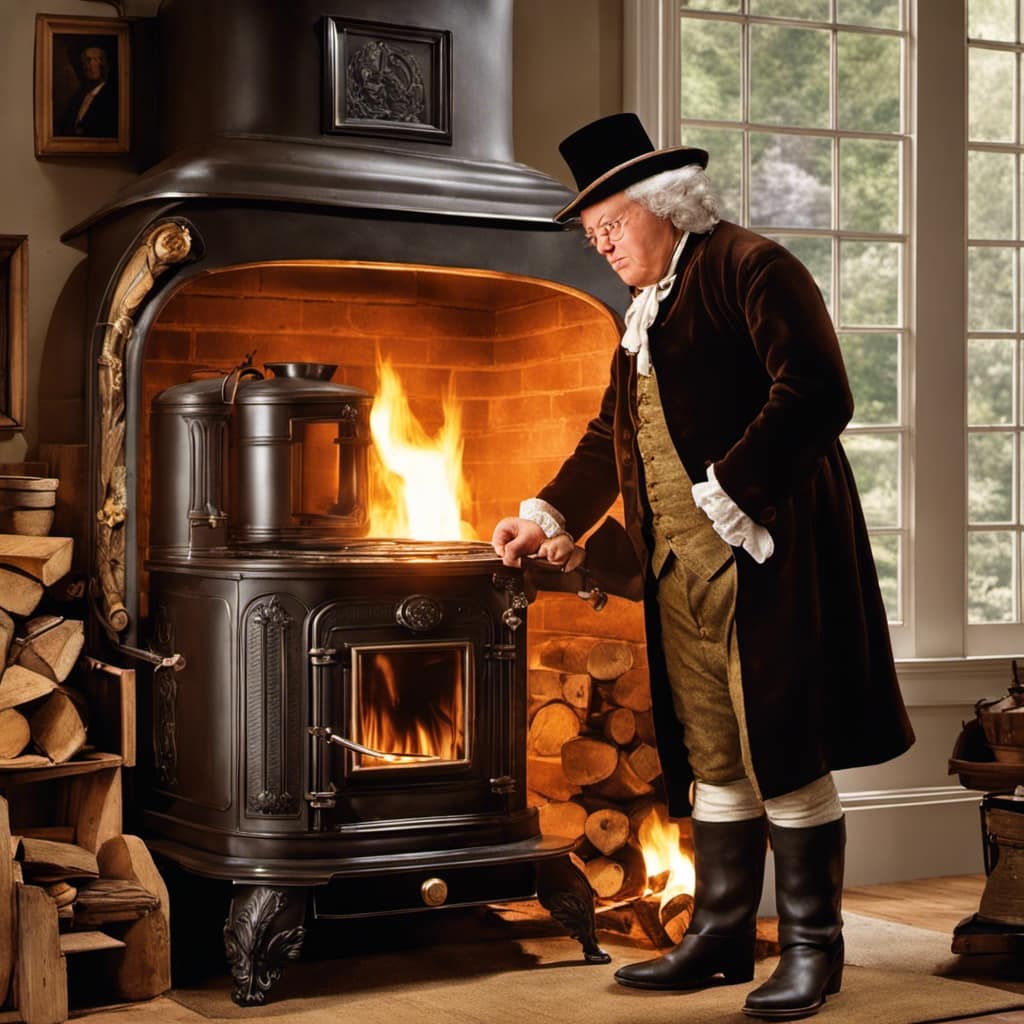
Wood selection is crucial for maintaining a long-lasting fire. Dry hardwoods provide a more efficient burn, producing more heat and less smoke. The key is to ensure the wood is properly seasoned and has a moisture content of around 20% or less. This is achieved by properly storing the firewood.
Firewood storage is essential to maintain the quality of the wood. I store my firewood in a well-ventilated area, off the ground, and protected from rain or snow. This helps prevent moisture absorption and ensures the wood remains dry and ready for burning. It’s important to stack the wood loosely, allowing air to circulate and facilitate the drying process.
Properly Stacking and Arranging the Wood
When it comes to properly stacking and arranging the wood for a wood stove, there are a few key techniques to keep in mind.
First, it’s important to stack the wood tightly and evenly, allowing for proper airflow and combustion.

Additionally, arranging the wood in a way that promotes a steady burn and optimal heat output is crucial for an efficient and long-lasting fire.
Wood Stacking Techniques
To maximize airflow and ensure a steady burn, I always stack my wood in a crisscross pattern. This method allows for better oxygen circulation, leading to a more efficient and longer-lasting fire. However, there are alternative stacking methods you can try, such as the teepee or the log cabin style, which also promote good airflow.
Another important factor to consider is the wood’s moisture content. Wet or green wood can hinder the burning process and produce more smoke. It’s crucial to use properly seasoned wood with a moisture content of around 20%. This ensures a cleaner burn and minimizes creosote buildup in the chimney.
By stacking your wood in a crisscross pattern and using dry, well-seasoned logs, you’ll create the ideal conditions for a long-lasting fire.

Now, let’s move on to arranging the wood for optimal burn.
Arranging for Optimal Burn
For optimal burn, I ensure that the logs are tightly packed together in the center of the firebox, allowing enough space for air circulation around them. This arrangement helps in maximizing heat output and controlling burn rate. To visualize this, consider the following table:
| Logs | Placement | Result |
|---|---|---|
| Large | Bottom layer | Generates |
| Medium | Middle layer | consistent |
| Small | Top layer | heat output |
Adjusting the Airflow for Maximum Efficiency
When it comes to getting the most out of your wood stove, adjusting the airflow is key. By properly managing the air intake, you can ensure optimal combustion and heat output.
This not only maximizes efficiency but also allows you to control fuel consumption, ultimately saving you time and money.
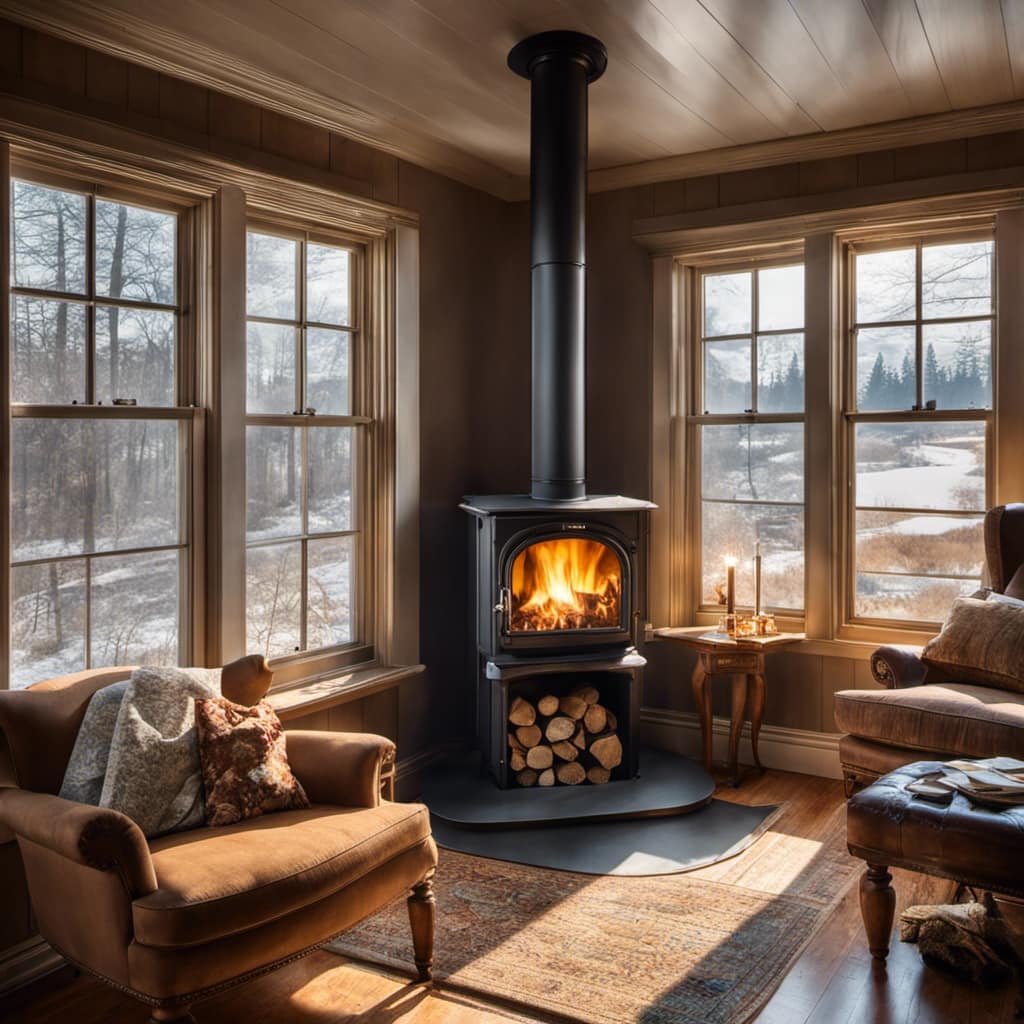
Proper Air Intake
I can adjust the air intake to keep the wood stove burning all night. Proper air intake is crucial for maximizing heat and controlling combustion. Here are three things to keep in mind:
-
Adjust the damper: The damper controls the amount of air that enters the stove. By opening it fully, you allow more oxygen to flow, increasing the heat output. However, if you close it too much, the fire may smolder and produce less heat.
-
Use the primary air control: Most wood stoves have a primary air control that regulates the amount of oxygen entering the firebox. Adjusting it correctly ensures efficient combustion and a steady burn throughout the night.
-
Consider secondary air: Some wood stoves also have secondary air controls. These controls introduce additional oxygen, resulting in a cleaner and more complete burn. Experiment with the secondary air to find the optimal setting for your stove.
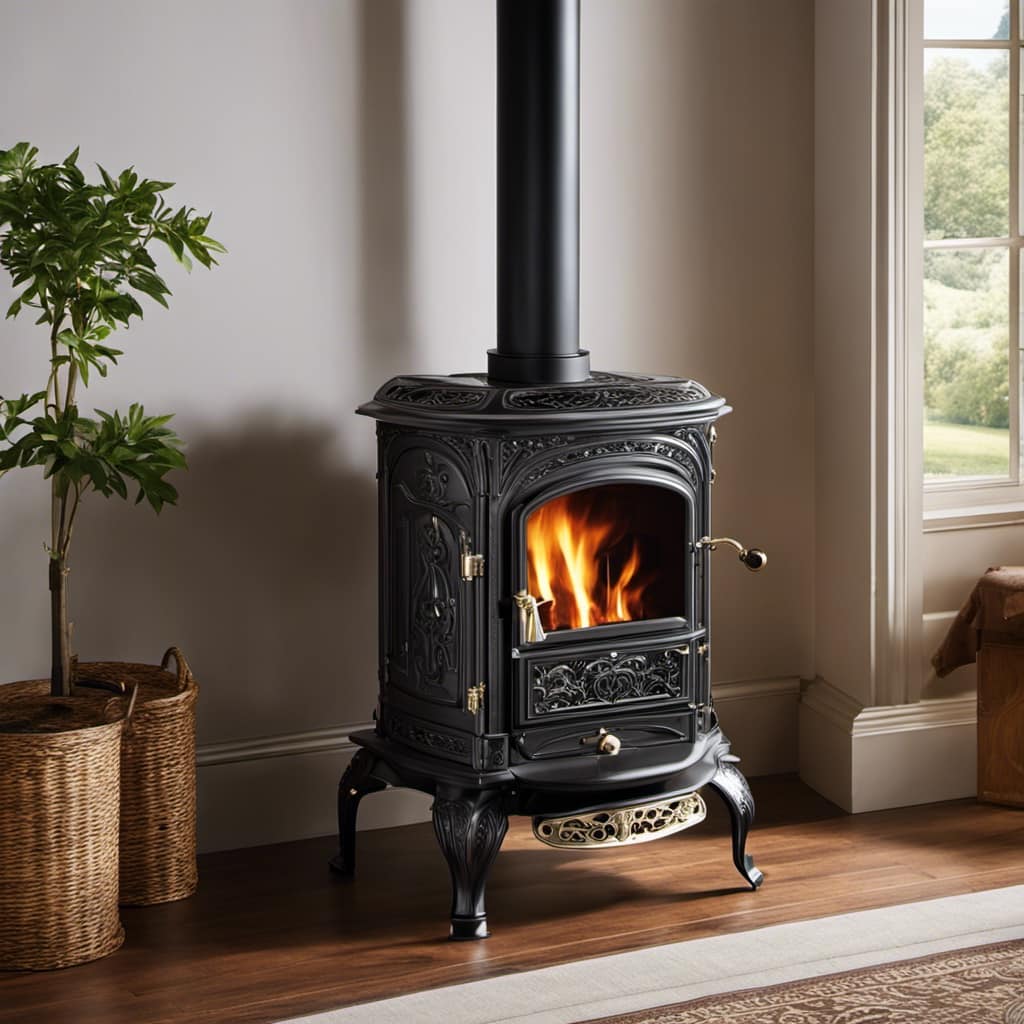
Balancing Heat Output
Finding the right balance of air intake ensures consistent and optimal heat output from my wood stove. Proper heat distribution and temperature regulation are crucial for a comfortable and efficient heating experience.
By adjusting the air intake, I can control the amount of oxygen that feeds the fire, which directly affects the heat output. Opening the air intake allows more oxygen to enter, increasing the heat production, while closing it reduces the oxygen supply, resulting in lower heat output.
It’s important to strike a balance between the two to maintain a steady and even heat throughout the room. Achieving the right balance not only maximizes the stove’s efficiency but also ensures that the heat is distributed evenly, creating a comfortable and cozy atmosphere.
This leads us to the next important aspect of wood stove management, which is fuel consumption control.
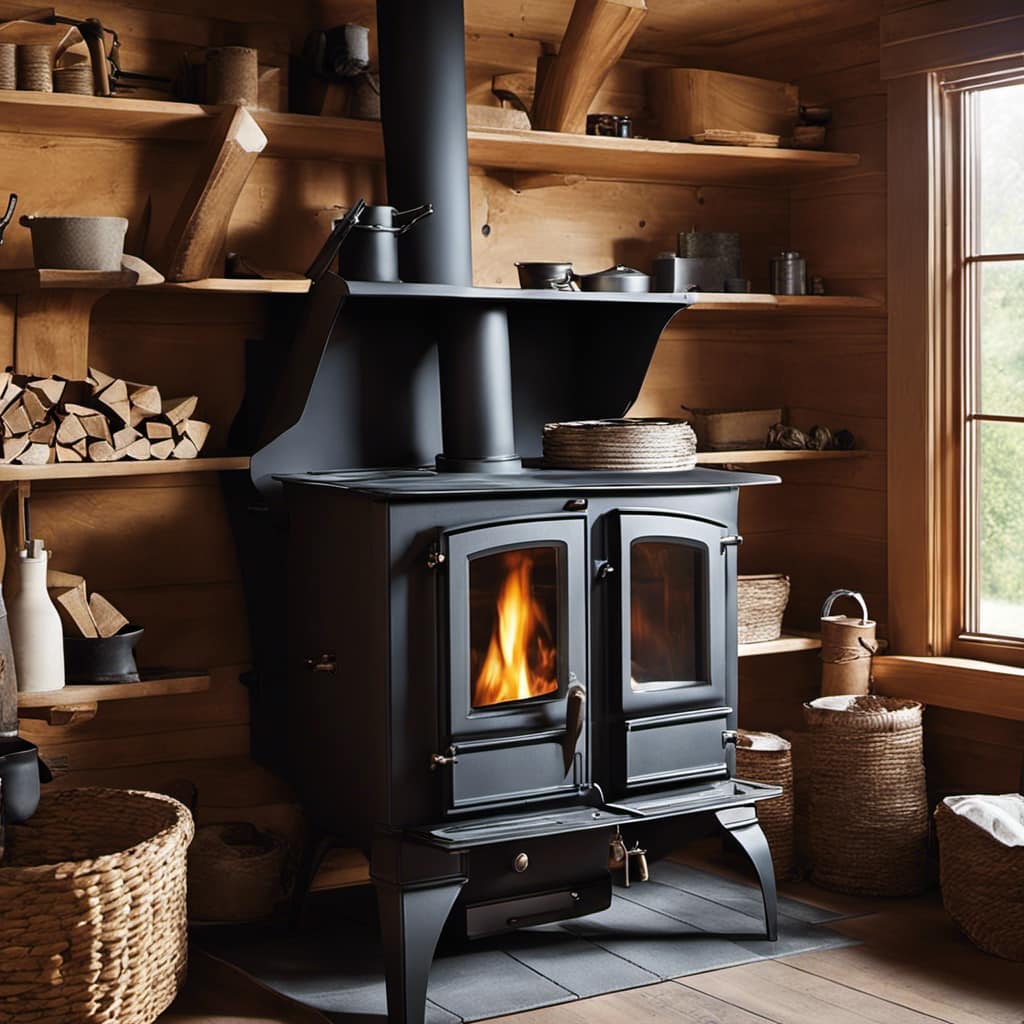
Fuel Consumption Control
When it comes to fuel consumption control in a wood stove, there are a few key strategies that can help maintain temperature and reduce smoke. Here are some tips:
-
Use dry and seasoned firewood: Moisture in wood can lead to inefficient burning and increased smoke production. Opt for well-dried firewood to ensure a clean and efficient burn.
-
Control airflow: Adjust the stove’s air vents to regulate the amount of oxygen entering the firebox. Finding the right balance will help maintain a steady burn without excessive smoke.
-
Load the stove properly: Arrange the firewood in a way that promotes good airflow and allows for even burning. This helps maximize heat output and minimize smoke production.
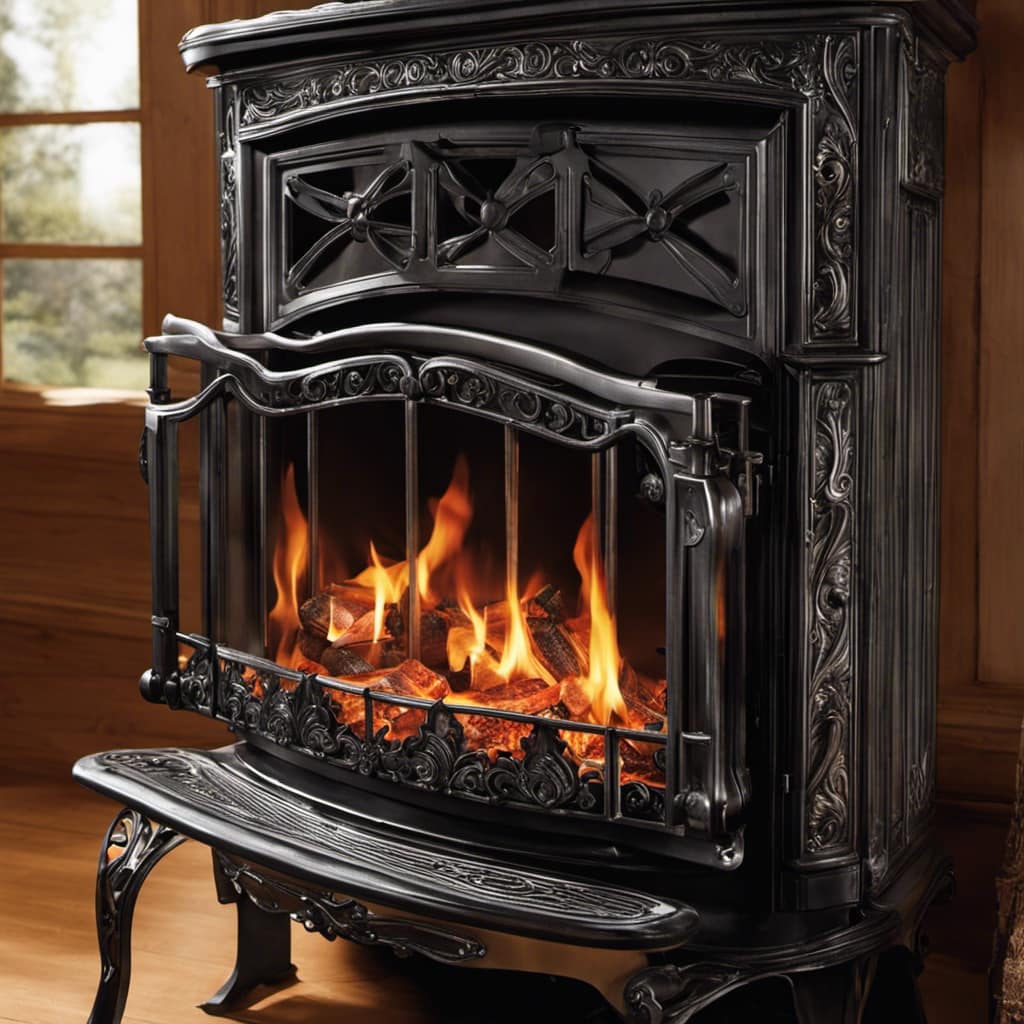
Maintaining a Consistent Heat Output
To keep a wood stove burning all night, I make sure to regularly add small amounts of fuel to maintain a consistent heat output. In addition to fuel management, there are other factors to consider in order to achieve this goal.
One important aspect is the use of insulating materials. By insulating the walls and floor around the wood stove, heat loss can be minimized, allowing the stove to maintain a higher temperature for a longer period of time. Insulating materials such as firebricks or ceramic tiles can be used for this purpose.
Another consideration is exploring alternative heating methods. For instance, using a wood stove with a secondary burn chamber or a catalytic converter can increase the stove’s efficiency and heat output, enabling it to burn for longer periods. These features help to extract more heat from the wood and reduce the amount of smoke and pollutants emitted into the environment.
Using Heat Retention Techniques
I have found that insulating the walls and floor around my wood stove has significantly improved heat retention. This simple technique has made a noticeable difference in the overall warmth of my home during the colder months.

Here are some key benefits and steps to consider when insulating your wood stove:
-
Enhanced heat distribution:
-
Insulating the walls and floor around the stove helps to prevent heat loss through the surrounding structures.
-
This ensures that more of the heat produced by the stove is radiated into the room, rather than being wasted.

-
Reduced energy consumption:
-
By improving heat retention, insulating the stove allows for more efficient burning of wood, reducing the need to constantly refuel the stove.
-
This not only saves on wood consumption but also reduces the amount of energy needed to maintain a comfortable temperature.
-
Increased safety:

-
Insulating the stove and its surroundings can help prevent accidental burns by reducing the external temperature of the stove.
-
It also minimizes the risk of fire hazards by preventing heat from spreading to combustible materials nearby.
To insulate your wood stove effectively, consider using materials such as fire-resistant insulation boards, ceramic tiles, or heat-resistant paint. Make sure to follow the manufacturer’s instructions and consult a professional if needed.
With proper insulation, you can maximize heat retention and enjoy a cozy and efficient wood stove experience.
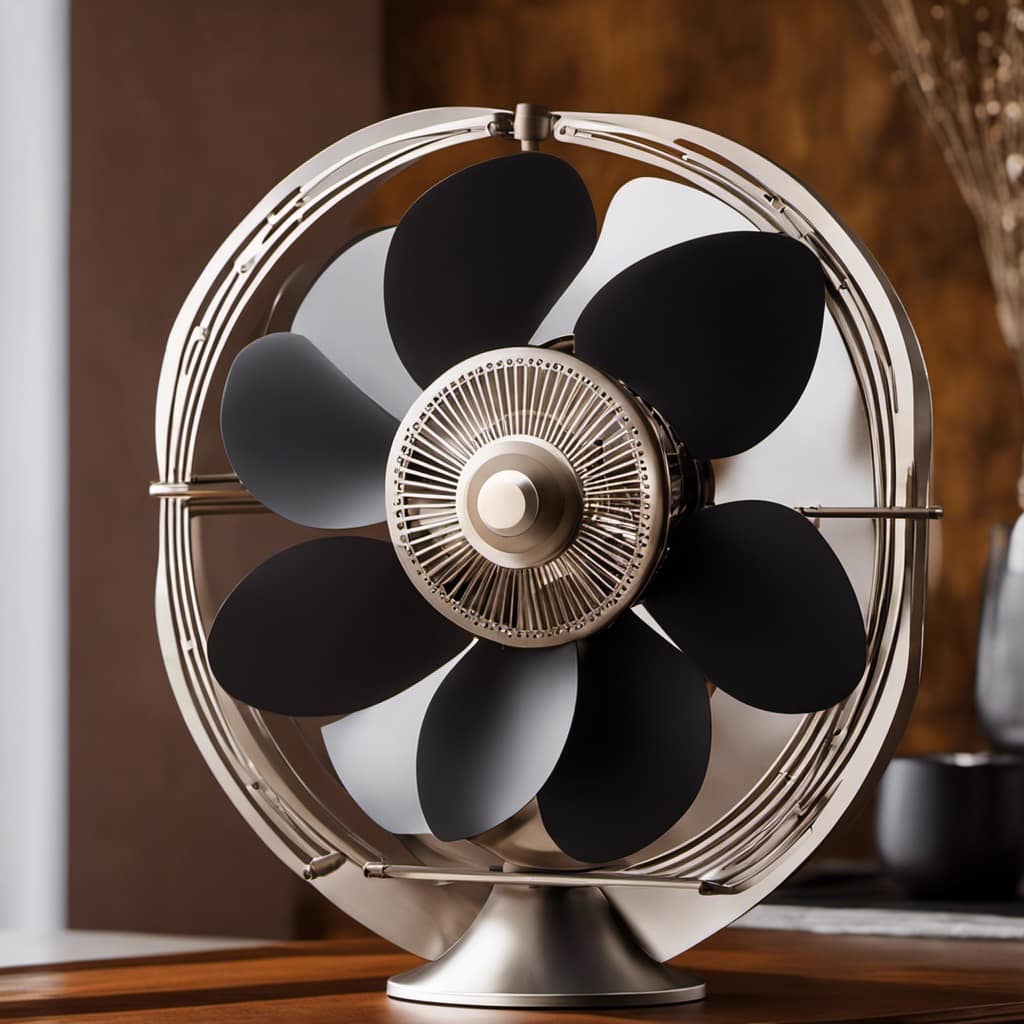
Safety Precautions and Maintenance Tips
Ensuring regular maintenance and following safety precautions, such as cleaning the chimney and keeping flammable objects away from the stove, are essential for a safe and efficient wood stove experience. As someone who enjoys the warmth and coziness of a wood stove, I prioritize fireplace safety and chimney maintenance. By regularly cleaning the chimney, I prevent the build-up of creosote, a highly flammable substance that can lead to chimney fires. I also make sure to keep flammable objects, such as curtains or furniture, at a safe distance from the stove to minimize the risk of accidental fires. To help you understand the importance of these precautions, I have provided a visual representation in the table below:
| Safety Precautions | Maintenance Tips |
|---|---|
| Clean chimney regularly | Keep flammable objects away |
| Install a chimney cap | Inspect stove for damages |
| Use a fireproof mat | Check carbon monoxide levels |
| Keep fire extinguisher | Replace worn-out parts |
| Have a smoke detector | Schedule professional inspections |
Frequently Asked Questions
How Much Firewood Should I Use to Keep a Wood Stove Burning All Night?
To keep a wood stove burning all night, it’s important to properly stack firewood and maximize heat output. One key factor is the amount of firewood used. While it can vary depending on factors like stove size and outside temperature, a general guideline is to use enough firewood to keep a consistent flame for at least 6-8 hours.
This will help maintain a steady temperature and ensure a warm and cozy night.
Can I Use Softwood Instead of Hardwood in My Wood Stove?
Using softwood instead of hardwood in a wood stove has its advantages and disadvantages.
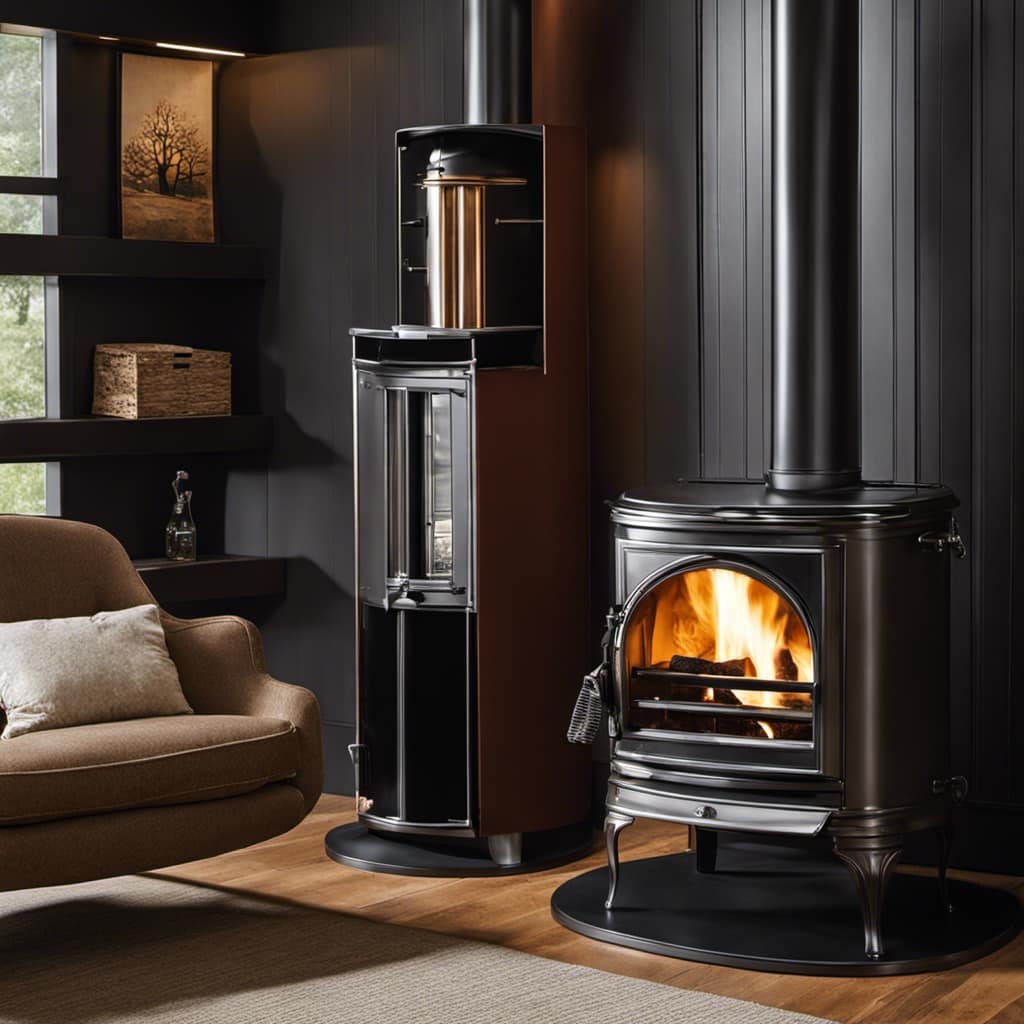
Softwood burns faster and creates more creosote buildup, which can be a fire hazard. However, it’s also easier to ignite and produces more heat in a shorter amount of time.
Hardwood, on the other hand, burns slower and produces less creosote. It may take longer to ignite, but it provides a longer-lasting and more consistent heat source throughout the night.
Should I Leave the Stove Door Slightly Open to Maintain a Consistent Heat Output?
Leaving the stove door slightly open can help maintain a consistent heat output in some cases. However, it may not be the most efficient ventilation technique for fuel efficiency. It’s important to strike a balance between airflow and heat retention.
Experimenting with different door positions and airflow adjustments can help find the optimal setting for your wood stove. Proper ventilation is key to maximizing the burn time and getting the most out of your wood stove.
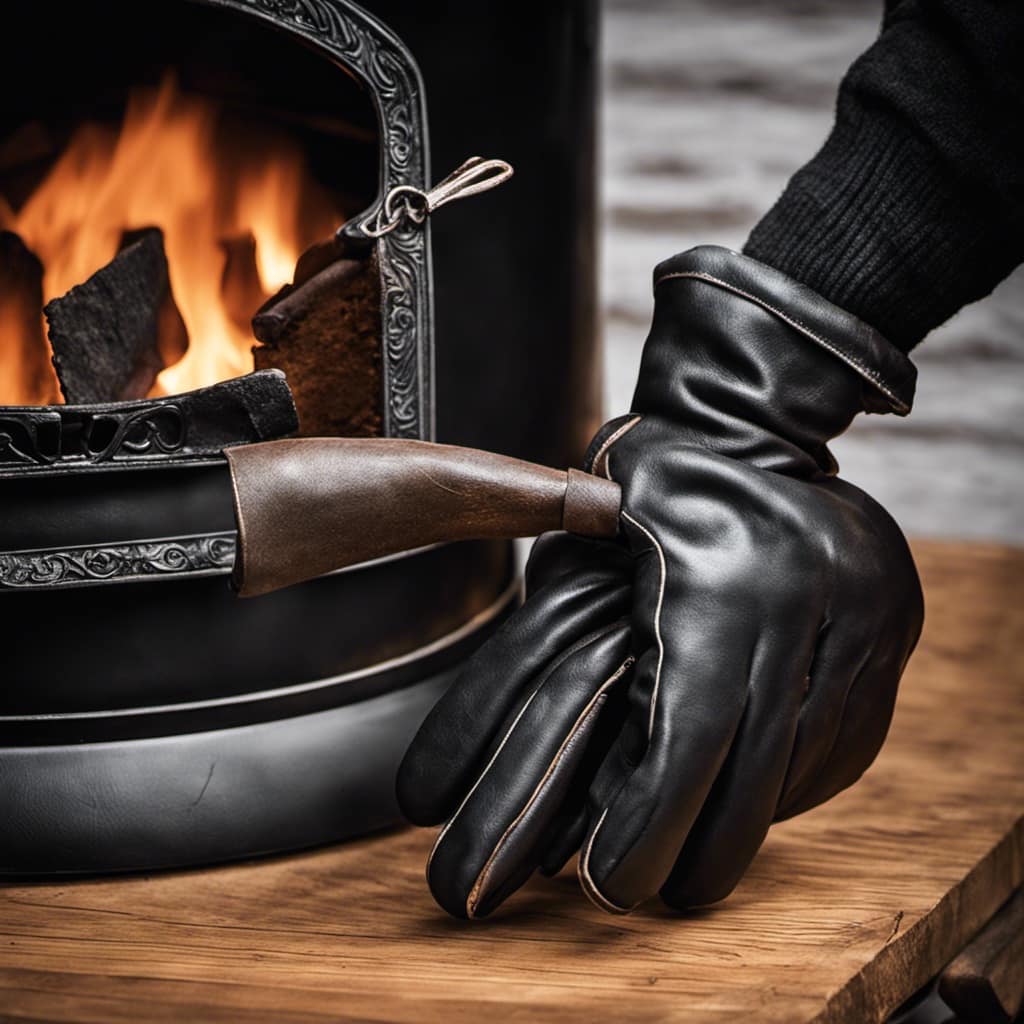
Can I Use a Fan to Improve the Airflow in My Wood Stove?
Using a fan to improve airflow in a wood stove can be a game-changer.
I remember when I first added a blower to my stove. It was like giving it a breath of fresh air.
The increased circulation helped the fire burn more efficiently and kept the heat consistent throughout the room.
How Often Should I Clean the Chimney of My Wood Stove for Optimal Performance?
How often should I clean the chimney of my wood stove for optimal performance?
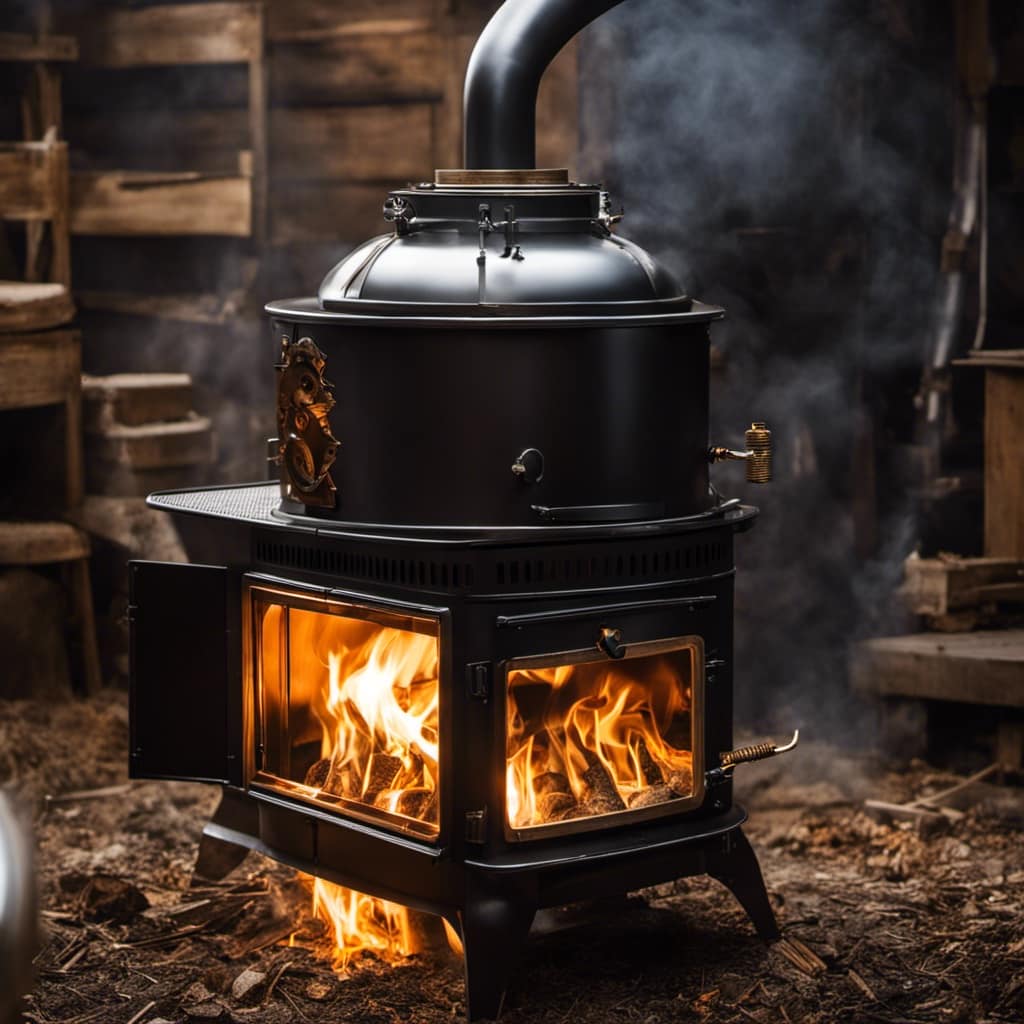
It’s crucial to regularly clean the chimney for the best functioning of your wood stove.
Neglecting chimney maintenance can lead to a build-up of creosote, which is highly flammable and can cause chimney fires.
To ensure safe and efficient operation, it’s recommended to clean the chimney at least once a year, or more frequently if you use your wood stove extensively.
Proper chimney maintenance is essential for a well-functioning wood stove.
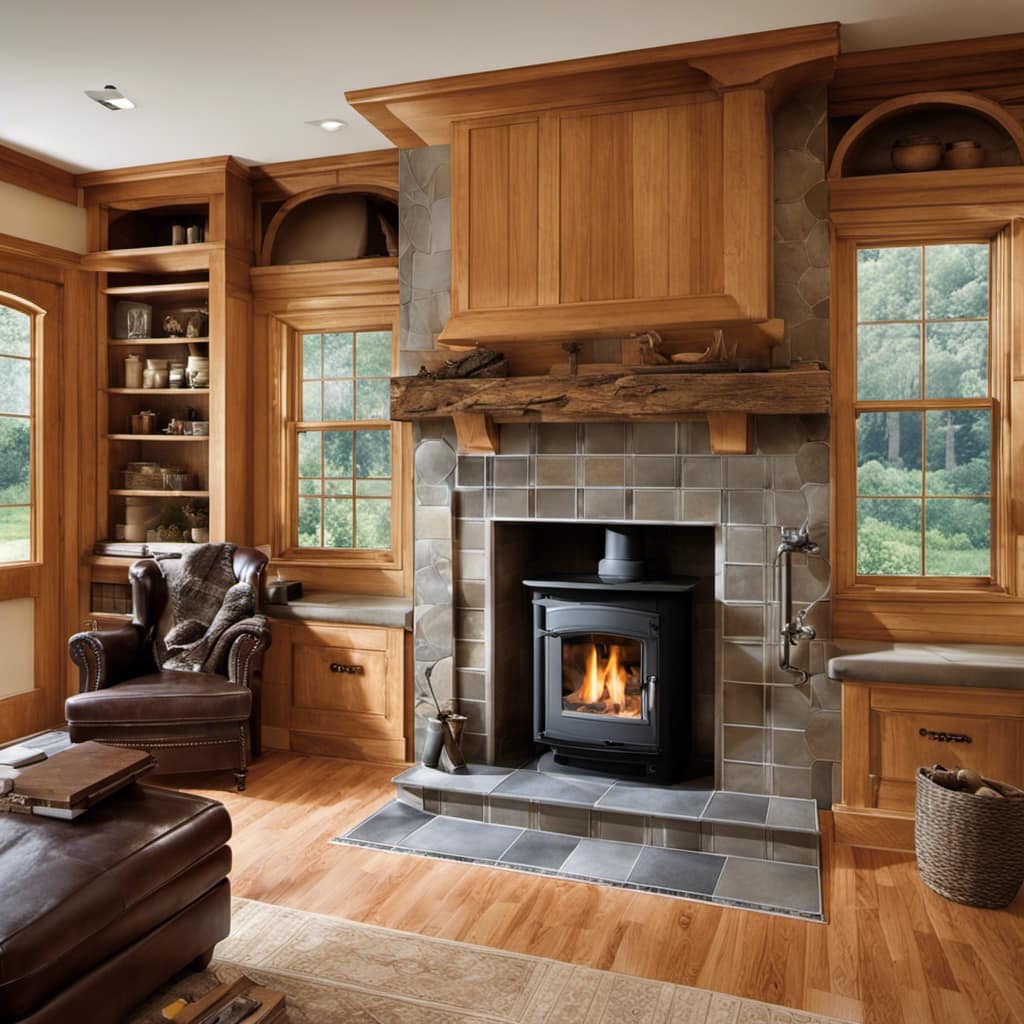
Conclusion
In conclusion, by carefully selecting the right wood, properly stacking and arranging it, adjusting the airflow, and using heat retention techniques, you can keep a wood stove burning all night.
Just like a well-tuned instrument, the harmonious combination of these methods will create a symphony of warmth and efficiency in your home.
Remember to prioritize safety and regular maintenance to ensure a cozy and uninterrupted night’s sleep.
Growing up surrounded by the vast beauty of nature, Sierra was always drawn to the call of the wild. While others sought the comfort of the familiar, she ventured out, embracing the unpredictable and finding stories in the heartbeat of nature.
At the epicenter of every remarkable venture lies a dynamic team—a fusion of diverse talents, visions, and passions. The essence of Best Small Wood Stoves is crafted and refined by such a trio: Sierra, Logan, and Terra. Their collective expertise has transformed the platform into a leading authority on small wood stoves, radiating warmth and knowledge in equal measure.




